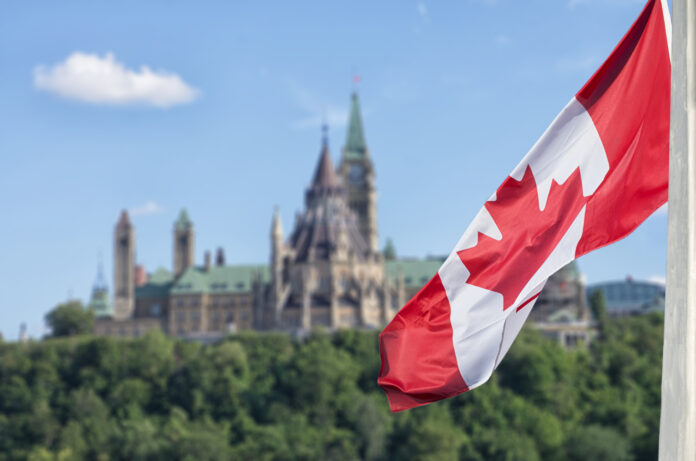
The Canadian government is going to invest $74.6 million – and another $15.7 million in ongoing capital – to boost its ability to process immigration applications both within Canada. From the Indo-Pacific region, Immigration Minister Sean Fraser has announced.
“The Indo-Pacific region is vital for Canada’s immigration and will continue to be in the future,” said the immigration minister.
“Today’s announcement brings significant new funding to help boost Canada’s visa application processing capacity at home and abroad. As we look to record growth in admissions in the years ahead, this funding will help promote greater diversity among those looking to visit, study, work or live in Canada.”
Read More Canada Immigration News
Double Our Canada Immigration Allotment, Newfoundland PNP Tells Federal Government
Nurse Aides And Orderlies Now Included Under Express Entry For Canada…
Canada Urged To Boost PNP Slots For International Students
The latest Immigration, Refugee and Citizenship Canada (IRCC) data shows India is the greatest source of new permanent residents to Canada.
In the first nine months of this year, Canada welcomed 99,620 new permanent residents from India, putting it on track to be the source of 132,877 new permanent residents, or more than 28.1 per cent of the projected total immigration of 471,787 new permanent residents, to Canada this year.
And India is only one of the 40 countries comprising the Indo-Pacific region.
Global Affairs Canada considers the region also to include Australia, Bangladesh, Bhutan, Brunei, Cambodia, North and South Korea, Indonesia, Japan, Laos, Malaysia, Maldives, Mongolia, Myanmar, Nepal, New Zealand, the 14 Pacific Island countries, Pakistan, China, the Philippines, Singapore, Sri Lanka, Taiwan, Thailand, Timor Leste, and Vietnam.
Roughly one in five Canadians have some kind of family tie to that region which is expected to represent half of the world’s GDP by the year 2040.
The region is also of massive importance to Canadian colleges and universities as it is the source of roughly two-thirds of international students in Canada, each of whom comes here with a study permit.
Watch Video
“The future of the Indo-Pacific region is our future and Canada has a role in shaping it,” said Foreign Affairs Minister Mélanie Joly.
“We are investing to promote peace and security throughout the region, create trade opportunities, connect people, strengthen international assistance and protect human rights, and answering the call for expanded and deeper engagement in this region.”
Last year, India, China and the Philippines were the top three sources of permanent residents to Canada, accounting for 44 per cent of total immigration to the country.
The Immigration Levels Plan for 2022-2024 set an immigration target of 431,645 new permanent residents for this year but Canada is already on track to surpass that number and set another immigration record this year.
Immigration To Canada On Track To Set New Record Of 471,787 New Permanent Residents This Year
The newly-released Immigration Levels Plan for 2023-2025 sets the immigration target for next year at 465,000, less than the number of new permanent residents the country is expected to welcome this year.
The immigration target for 2024 is 485,000 new permanent residents and the country is hoping to welcome 500,000 new permanent residents in 2025.
Business leaders are pleased with those rising levels of immigration, seeing in them the opportunity to deal with acute labour shortages throughout the country.
Under the Express Entry system, immigrants can apply for permanent residency online if they meet the eligibility criteria for one of three federal immigration programs, the Federal Skilled Worker Program (FSW), Federal Skilled Trades Program (FST), and Canada Experience Class Program (CEC), or a participating provincial immigration program.
Candidates’ profiles then are ranked against each other according to a points-based system called the Comprehensive Ranking System (CRS). The highest-ranked candidates will be considered for an Invitation to Apply (ITA) for permanent residence. Those receiving an ITA must quickly submit a full application and pay processing fees, within a delay of 90 days.
Through a network of Provincial Nominee Programs (PNP), almost all of Canada’s ten provinces and three territories can also nominate skilled worker candidates for admission to Canada when they have the specific skills required by local economies. Successful candidates who receive a provincial or territorial nomination can then apply for Canadian permanent residence through federal immigration authorities.
Canadian employers can also recruit and hire foreign nationals through the Temporary Foreign Worker Program (TFWP) and the International Mobility Program (IMP).
The Global Talent Stream (GTS), a part of the TFWP, can under normal processing situations lead to the granting of Canadian work permits and the processing of visa applications within two weeks.

